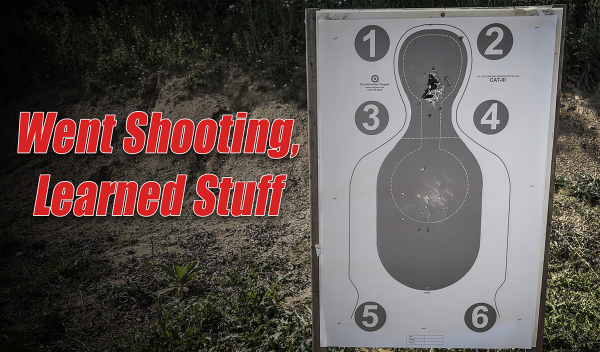
I went shooting last week, and learned a couple things.
The shooting was part of a media event hosted by ammunition manufacturer Fiocchi, with support from some other companies such as Dead Air Silencers, Springfield Armory, Aimpoint, Stoeger, Rock River Arms, and a few others.
The event was held in Mount Carroll, Illinois at the firearms training center and tactical shooting facility known as The Site. If you are not immediately familiar with The Site then you may know it by one of its previous names: Blackwater North, US Training Center, Impact Training or Hollow Training Center.
The Site saw a few management changes over the years but still seems to be an ideal place to train, and its central location within the country makes it an excellent place to host a media event, even if direct flights into Moline and the Quad Cities Airport are few and far between.

Thanks to an insufferable airline maintenance issue – I won’t mention the airline but it rhymes with American – and a missed connection in Chicago, I managed to finally find my way to a bed at the Black Bear Lodge North somewhere around 1:40 a.m.
Getting maybe five hours of sleep is not exactly the best way to kick off a day of shooting, but then that’s why God invented coffee. Right?
Thankfully the weather during the entire event wavered between ideal and perfect, and I’m really glad it did. The Site is a sprawling 129-acre facility with nine active ranges, including six flat ranges, a 2,700 square foot live fire shoot house, and 3,500 square foot simulation house, a 600 yard range with variable-speed moving target system, and a jungle walk.
It’s a beautiful facility. The kind where you want to train…at least when the weather is a nice as it was.
Our “training” that first morning wasn’t shooting or tactics. Instead it was Fiocchi walking the invited media through the process of the development of their new CovertX concealed carry and Hyperformance SBR Enhanced ammunition offerings.
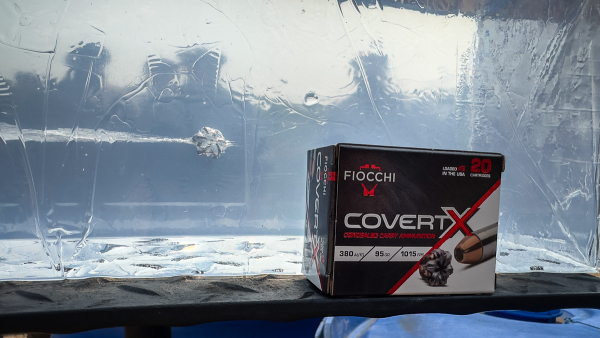
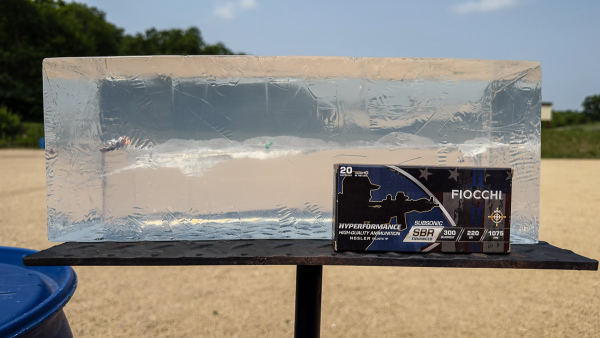
Having never been on a tour of an ammunition factory, or even sat down with an ammunition manufacturer’s product development team, I didn’t fully understand what went into launching a new line of ammo. I just kind of assumed it was along the line of “here’s some brass, primers, powder, and projectiles, now go make some ammo.”
It’s not even remotely that simple – at least not for premium ammo.
But, that’s a longer, much more detailed story for another day. This is about shooting and coming to a couple important realizations.
Training With Purpose Always Pays Off
I wrote about this before but practicing and/or training with a well-thought-out structure delivers results. It seems so obvious but I cannot count the number of times I did not structure my shooting and was frustrated by how poorly I shot.
That wasn’t the case last week…at all. Under the direction of Joe Lidbury, a 20-year Wisconsin law enforcement professional, and highly regarded instructor at The Site, we ran through a handful of very simple shooting drills, all of which focused on the repetition of mechanics.

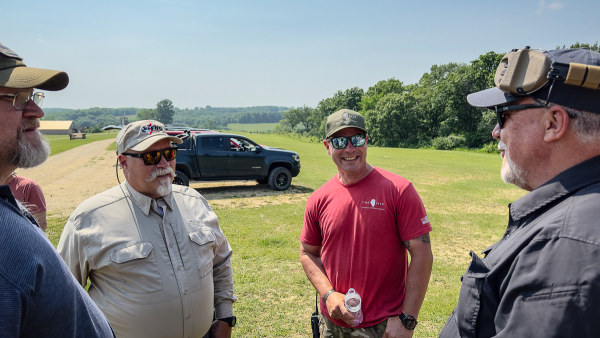
I know what you’re thinking. Big deal, they’re simple drills, and at close-in distances, so what’s to be gained. What veil does that pull back on your shooting? And that’s a valid question.
Here’s my answer.
I haven’t been out shooting for a while, so my mechanics are suspect – at best. My competency, since shooting is a very perishable skill, is definitely suspect. Even more so since several very good shooters were on the line next to me which further spotlights a poor performance by comparison.
And here is the absolute kicker in the mix of potential failure. I was shooting a pistol I had never shot before, with an optic I had not yet used, drawing from a new holster I hadn’t really seen before.
Despite all this, I somehow fell into a groove and ended up shooting real well. And I think shooting within a structure gets you there. Had there not been a structure, had Joe not been guiding us through our ramping up of the shooting drills, there’s no way I would have shot that well.

There were several guns available to shoot. There was the Echelon from Springfield Armory, an excellent gun that I do like shooting. There were a few Stoeger pistols, including the Stoeger STR-9 Combat SX. This was the one I really wanted to shoot because I had already shot the STR-9 Combat and loved it. Unfortunately there was not an extra holster for that model.
Instead of those two models I was forced to ‘slum it’ and shoot a Walther PDP Pro 4.5” model with an Aimpoint ACRO P2 mounted on top. Of course, that’s a really good setup but if you have never picked one up, and only ever shot a Walther PPQ once or twice, you’re not guaranteed a whole lot of success your first time out on the range.
And yet, it shot great. And I shot it great. I still can’t tell you exactly how, other than to say doing so through a very structured process, such as shooting from the low ready before moving on to shooting from the holster, kept me from second guessing what I was doing. Hell, I wasn’t giving it much thought at all beyond following the commands and doing that safely.
Structured shooting gets you out of the way of your own second guessing…I’m guessing.
Grip Strength Determines Accuracy
The second, and probably more important of these two realizations is that your grip – the strength of it – is the biggest determining factor in how well you shoot.
Yes, I know that might sound a bit sacrilegious, especially in light of years and years of being told that the sight picture is the key, or how you prep and pull (or press) the trigger is the key.
Those are both critical elements to shooting accurately. But if your grip is weak, if the pressure you exert on the pistol’s grip isn’t robust, then the other elements suffer. This is especially true when the speed of shooting increases.
This was made very clear as we shot a target through four strings of fire from five yards. Each string ran us through the entire fully loaded mag, which in my case meant 18-rounds.
Starting from a low ready we shot a single round before returning to the low ready and repeating. The second string had us shooting the same drill but this time it was doubles.
The third and fourth strings were from the holster, starting with a single shot and then finally a Mozambique with ‘two to the body and one to the head.’
This ended up being a total of 72 rounds across the four strings. And every time I let my concentration drift and my grip relax, I threw a shot high, low or anywhere I wasn’t originally planning on putting that round.
I watched this happen in real time and immediately adjusted on the following shot. And it was always my grip that was at fault. With a strong grip came a much more solid sight picture and much better trigger control.
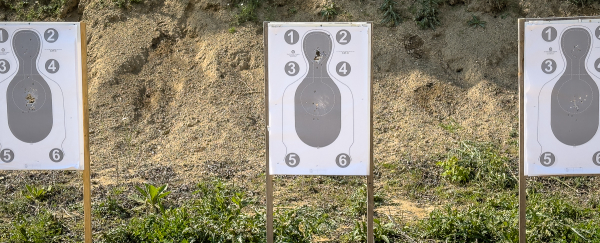
By the time we were done I had shot a pretty ragged hole through the upper A zone (a.k.a. the head) of the target. I was pretty happy with that, and was feeling a bit too proud of myself.
Of course, Joe’s instruction was to shoot center mass of the target, transitioning to the head only for the Mozambique drill. Maybe next time I can add concentrating on what the instructor says and not just the strength of my grip.
— Paul Erhardt, Managing Editor, the Outdoor Wire Digital Network